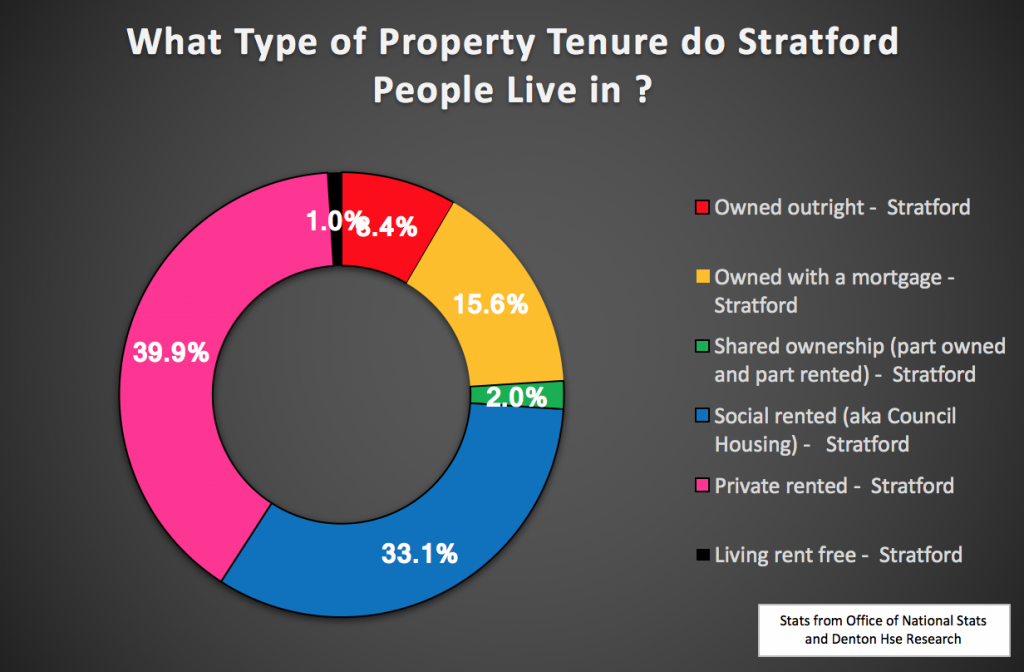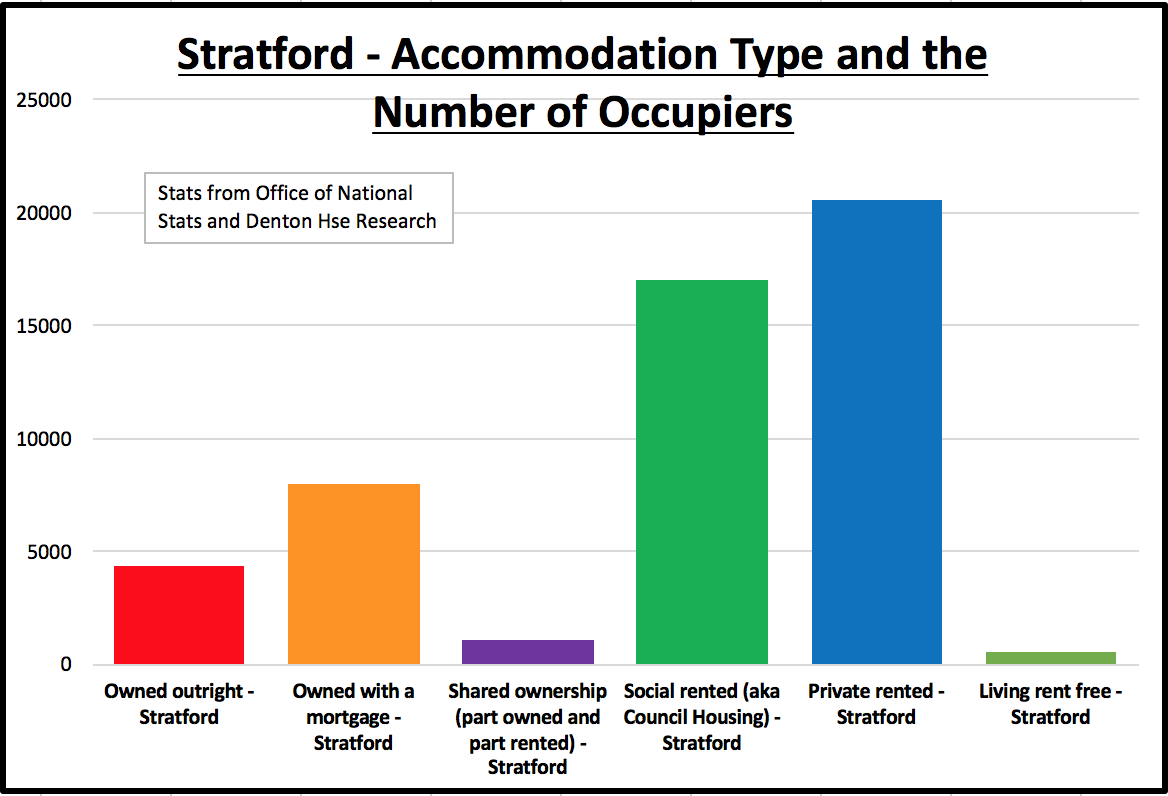Should you still be investing in Stratford Buy To Let?
If I were a buy to let landlord in Stratford today, I might feel a little bruised by the assault made on my wallet after being (and will continue to be) ransacked over the last 12 months by HM Treasury’s tax changes to buy to let. To add insult to insult to injury, Brexit has caused a tempering of the Stratford property market with property prices not increasing by the levels we have seen in the last few years. I think we might even see a very slight drop in property prices this year, and if Stratford property prices do drop, the downside to that is first time buyers could be attracted back into the Stratford property market, meaning less demand for renting (meaning rents will go down). Yet, before we all run for the hills, all these things could be serendipitous to every Stratford landlord, almost a blessing in disguise.
Stratford (E15) has a population of 51,490, so when I looked at the number of people who lived in private rented accommodation, the numbers astounded me …

Yields will rise if Stratford property prices fall, which will also make it easier to obtain a buy to let mortgage, as the income would cover more of the interest cost. If property values were to level off or come down that could help Stratford landlords add to their portfolio. Rental demand in Stratford is expected to stay solid and may even see an improvement if uncertainty is protracted. However, there is something even more important that Stratford landlords should be aware of, the change in the anthropological nature of these 20 something potential Stratford first time buyers.

I have just come back from a visit to my wife’s relations after a family get together. I got chatting with my wife’s nephew and his partner. Both are in their mid/late twenties, both have decent jobs in Stratford and they rent. Yet, here was the bombshell, they were planning to rent for the foreseeable future with no plans to even save for a deposit, let alone buy a property. I enquired why they weren’t planning to buy? The answers surprised me as a 40 something, and it will you. Firstly, they dont want to put cash into property, they would rather spend it on living and socialising by going on nice holidays and buying the latest tech and gadgets. They wanted flexibility to live where they choose and finally, they didn’t like the idea of paying for repairs. All their friend’s feel the same. I was quite taken aback, because buying a house is just not top of the list for these youngsters.
So, as 39.9% of Stratford people are in the rented accommodation and as that figure is set to grow over the next decade, now might just be a good time to buy property in Stratford – because what else are you going to invest in? Give your money to the stock market run by sharp suited city whiz kids – because at least with property – it’s something you can touch- there is nothing like bricks and mortar!



